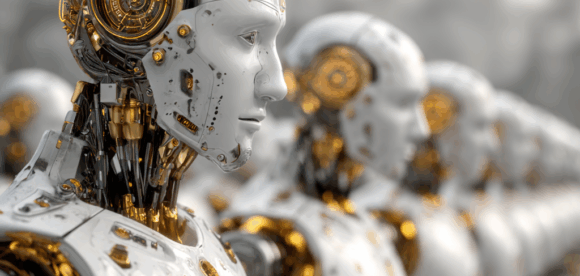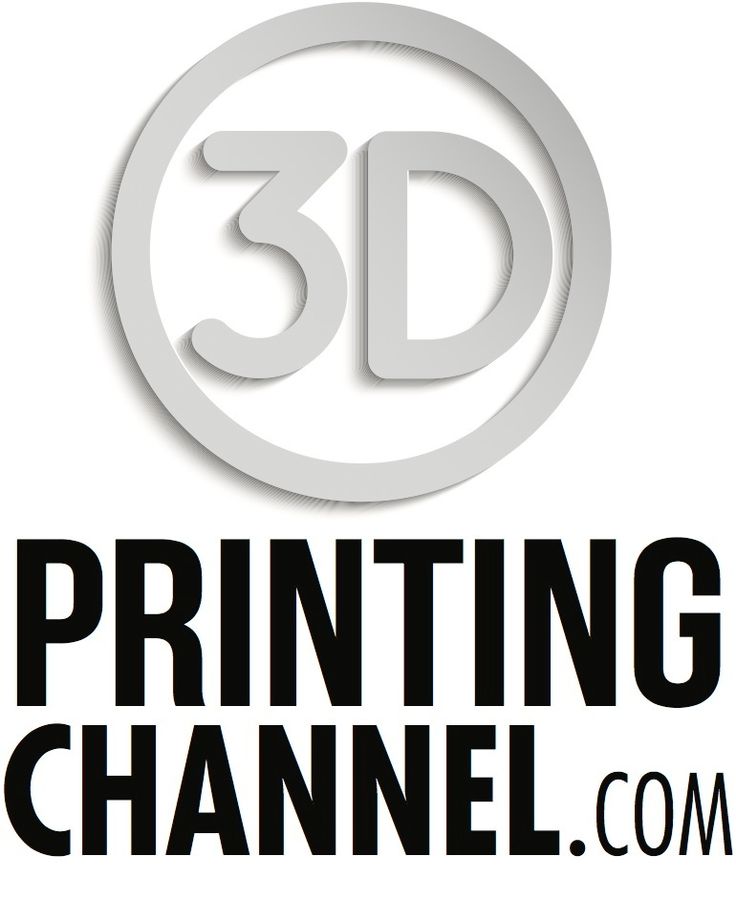3D Printing + AI: Smart Design, Optimization & Automated Repairs
3D Printing + AI: Smart Design, Optimization & Automated Repairs
Additive manufacturing is getting an intelligent upgrade. Discover how artificial intelligence is revolutionizing 3D printing — from generative design and material optimization to real-time error correction and self-healing systems — paving the way for autonomous, adaptive production lines of the future.
🧩 The Fusion of AI and Additive Manufacturing
For decades, 3D printing — or additive manufacturing (AM) — has been hailed as the future of production. It can build intricate shapes, reduce waste, and enable on-demand manufacturing anywhere in the world.
But as the technology matured, a new challenge emerged: complexity. Designing, optimizing, and monitoring 3D prints at scale requires immense precision and real-time decision-making — tasks perfectly suited for artificial intelligence.
The integration of AI into 3D printing isn’t just an upgrade — it’s a transformation. It marks the shift from static printing machines to smart, self-optimizing factories that can design, build, and repair autonomously.
⚙️ The Limitations of Traditional 3D Printing
Traditional 3D printing relies heavily on pre-programmed instructions.
Designers model an object in CAD software, slice it into layers, and send it to the printer. Once the print starts, there’s little adaptability — if something goes wrong, the job often fails entirely.
Key challenges include:
-
Material inconsistencies that lead to weak points.
-
Thermal warping during cooling.
-
Surface defects or incomplete bonding between layers.
-
Waste from failed or inaccurate prints.
As 3D printing expands into aerospace, medicine, and construction, these inefficiencies are no longer acceptable. Enter AI — the brain that makes 3D printing adaptive, predictive, and efficient.
🤖 How AI Transforms the 3D Printing Workflow
AI enhances every stage of the additive manufacturing process — from design to post-processing.
1. Generative Design: AI as the Co-Creator
Generative AI allows designers to input goals and constraints — such as weight, strength, and material — and the algorithm generates thousands of optimized geometries.
This approach produces organic, lightweight structures impossible to design manually, commonly used in aerospace, automotive, and medical implants.
Tools like Autodesk Fusion 360’s Generative Design, Siemens NX, and nTopology use AI-driven topology optimization to create parts that are both stronger and lighter than human-designed equivalents.
2. Process Optimization: Predicting and Preventing Failures
AI models can monitor every layer in real time using cameras, sensors, and thermal imaging. By training on thousands of previous prints, they learn to recognize early signs of deformation, under-extrusion, or temperature imbalance.
-
Computer vision algorithms analyze each layer for anomalies.
-
Reinforcement learning fine-tunes printing parameters dynamically.
-
Predictive maintenance alerts operators before equipment fails.
This creates a closed feedback loop — where printers continuously learn from every build to improve accuracy and reduce waste.
3. Material Innovation: Smarter Choices, Stronger Results
AI is revolutionizing material science by predicting how composites, resins, and metals behave during printing and under stress.
Machine learning models can:
-
Identify ideal material blends for strength, flexibility, or heat resistance.
-
Predict deformation or cracking before printing starts.
-
Suggest layer orientations that improve bonding and reduce stress.
These insights accelerate R&D cycles and enable the use of custom, high-performance materials for mission-critical applications.
4. Automated Repairs & Self-Healing Systems
In the next phase of additive manufacturing, printers won’t just build — they’ll repair.
AI-enabled systems are being trained to detect defects mid-print and adjust extrusion or reprint damaged sections autonomously.
In advanced industrial settings, robotic swarms or mobile printer units can perform localized repairs on large structures — even in remote or hazardous environments.
Imagine bridges, satellites, or aircraft components that self-repair using robotic 3D printers guided by AI models. That future is closer than most realize.
5. Adaptive Manufacturing Networks
Beyond individual machines, AI is enabling networked manufacturing ecosystems — where fleets of 3D printers communicate, share data, and allocate tasks based on efficiency.
This distributed model allows manufacturers to:
-
Balance workloads across facilities.
-
Reduce downtime through predictive coordination.
-
Scale production globally while maintaining quality consistency.
Platforms like Velo3D Flow, HP’s AI-driven Multi Jet Fusion, and Markforged Digital Forge are already pioneering intelligent, cloud-connected factories.
🏗️ Real-World Use Cases
🛩 Aerospace
Companies like GE Additive and Airbus use AI-driven printing to produce lightweight engine components with up to 60% less material and improved aerodynamics.
🏥 Healthcare
AI-powered 3D printing creates patient-specific implants and prosthetics tailored with near-perfect anatomical precision. Machine learning models predict fit and biocompatibility.
🚗 Automotive
Manufacturers like BMW and Ford leverage AI to generate optimized chassis parts and simulate crash resistance before printing prototypes.
🧱 Construction
Large-scale 3D printers combined with AI are constructing homes with minimal human supervision, adjusting material flow and curing times dynamically based on real-time feedback.
🌱 Sustainability & the Circular Economy
AI-driven additive manufacturing is inherently more sustainable than traditional production, which relies on subtractive processes that waste material.
AI amplifies this advantage by:
-
Reducing failed prints and rework.
-
Optimizing designs for minimal material use.
-
Enabling local, on-demand production that cuts shipping emissions.
-
Promoting recyclable filament loops — where printed parts are ground and reused.
In a world facing climate and supply chain pressures, smart manufacturing is not just efficient — it’s essential.
🧠 Human + Machine: The Future of Design Thinking
The fusion of AI and 3D printing redefines the role of human creativity.
Designers and engineers become co-pilots, steering algorithms rather than manually sculpting every detail.
AI handles the complexity; humans define the vision. Together, they form a partnership that pushes design beyond the limits of imagination.
In this new paradigm, manufacturing shifts from “how do we build it?” to “what do we want to create?”
🔮 The Autonomous Factory of the Future
The ultimate goal of AI-integrated 3D printing is full autonomy — factories that run 24/7, adapting to changing demands and repairing themselves as needed.
Picture a network of intelligent printers linked through blockchain for transparent supply chains, managed by AI agents that optimize every variable — cost, material, logistics, and sustainability.
It’s not science fiction — it’s the next industrial revolution, merging AI, robotics, 3D printing, and blockchain into one self-evolving ecosystem.
🔑 Key Takeaways
-
AI transforms 3D printing into an adaptive, data-driven process.
-
Generative design creates stronger, lighter parts through AI creativity.
-
Real-time monitoring and predictive maintenance reduce waste.
-
Self-healing and autonomous repair systems enable zero-downtime manufacturing.
-
The fusion of AI and additive manufacturing is building the foundation for the autonomous factory of the future.
Crypto Rich ($RICH) CA: GfTtq35nXTBkKLrt1o6JtrN5gxxtzCeNqQpAFG7JiBq2
CryptoRich.io is a hub for bold crypto insights, high-conviction altcoin picks, and market-defying trading strategies – built for traders who don’t just ride the wave, but create it. It’s where meme culture meets smart money.
Categories
Recent Posts
- The DAO of Design: Community-Owned Innovation in the 3D Printing Space
- 3D Printing + AI: Smart Design, Optimization & Automated Repairs
- Investing in Bioprinting: Startups, Stocks, and Tokens to Watch
- The 3D Printing Industry – 3D Printing Meets Blockchain: Tokenizing the Future of Manufacturing
- Robots, Printers, and Tokens: The Rise of Crypto-Powered Manufacturing
Recent Comments
- 3D Printing Start Up Incubator Questions | International toolkit on Slide Show Presentation About Questions Start Ups and Entrepreneurs Need to Ask Before Starting 3D Printing Businesses
- 3D Printing Start Up Incubator Questions | 3D Printing Ad Agency on Slide Show Presentation About Questions Start Ups and Entrepreneurs Need to Ask Before Starting 3D Printing Businesses
- 3D Printing Start Up Incubator Questions | 3D Printing Blog on Slide Show Presentation About Questions Start Ups and Entrepreneurs Need to Ask Before Starting 3D Printing Businesses
- 3D Printing Start Up Incubator Questions | 3D Printing PR Firm on Slide Show Presentation About Questions Start Ups and Entrepreneurs Need to Ask Before Starting 3D Printing Businesses
- 3D Printing Start Up Incubator Questions | 3D Printing Bank on Slide Show Presentation About Questions Start Ups and Entrepreneurs Need to Ask Before Starting 3D Printing Businesses











